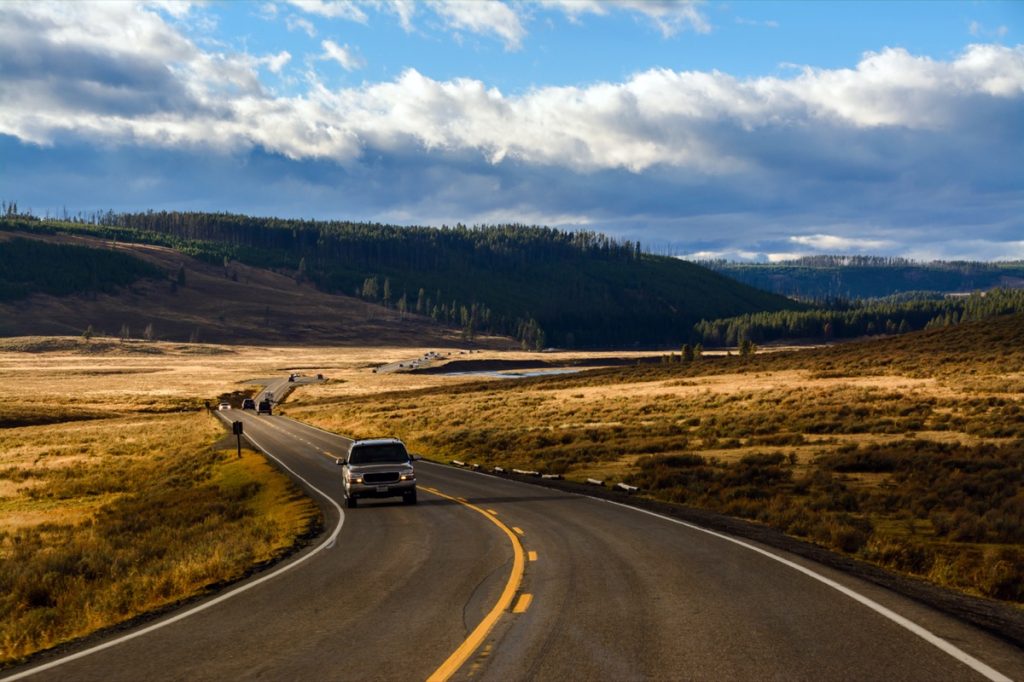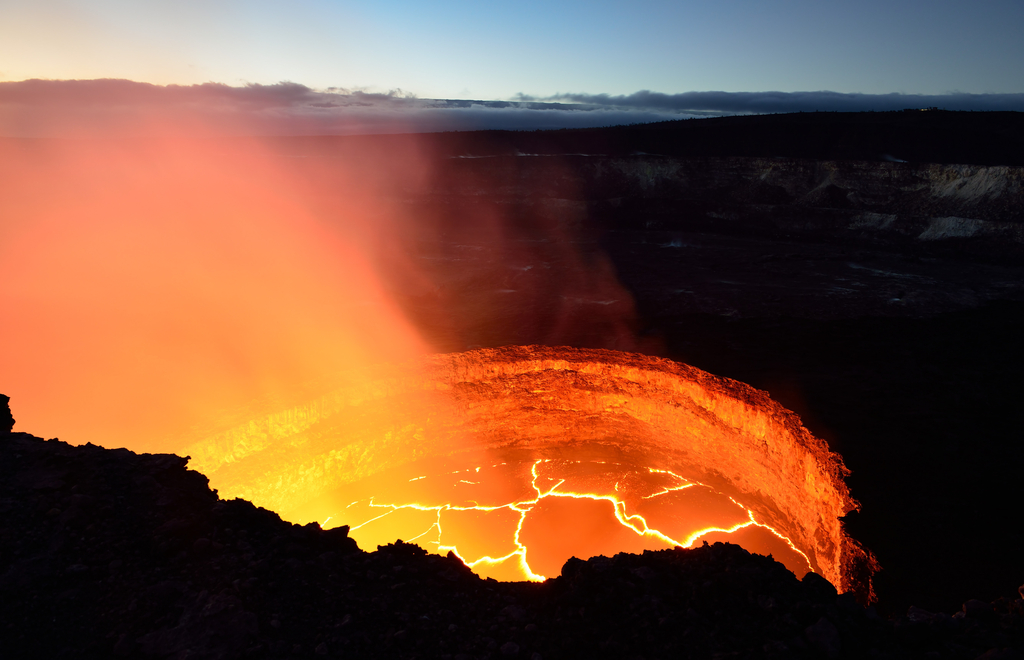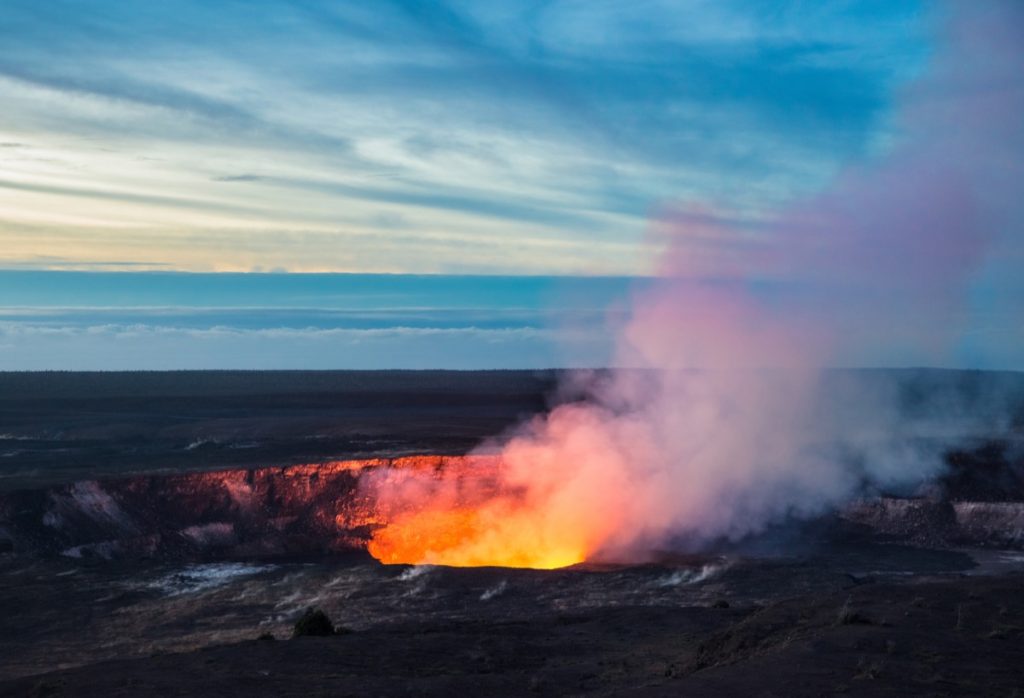This Popular National Park Is Closing Areas to Visitors Amid “Elevated Seismic Activity”

Since its establishment, the U.S. National Park System has provided visitors with relatively easy access to pristine nature. For many, some of the landmarks found within them can be a major draw on their own, including Yellowstone’s Old Faithful geyser or Yosemite’s iconic summit El Capitan. But as a showcase of nature, all sites are also subject to sudden changes in the environment that can come without warning. And now, one popular national park is closing off areas to visitors due to “elevated seismic activity.” Read on to see how the development could impact your next visit.
READ THIS NEXT: U.S. National Parks Are Getting Rid of This for Visitors, Starting Now.
Natural events can suddenly change how visitors access national parks.

National parks are wildly popular tourist destinations in their own right, where all forces of nature are on display. But while they may be a spectacle in some cases, they also can alter the visitor experience and even partially or fully close sites.
The most recent notable example is the catastrophic flooding that struck Yellowstone National Park on June 14. Due to a combination of heavy rainfall and snow melt from warmer temperatures, water levels reached a record high of 11.5 feet, damaging and destroying major roadways and infrastructure throughout the site, the Bozeman Daily Chronicle reported. As a result, officials evacuated 10,000 visitors and fully closed the park to assess the damage before reopening much of the site’s southern roads. It wasn’t until Oct. 15 that officials announced it was reopening the park’s Northeast Entrance Road, bringing service back to 99 percent of the site’s roadways.
But other ongoing natural features of the park have long created issues for visitors. According to officials with the U.S. Geological Survey’s (USGS) Yellowstone Volcano Observatory, the geothermal activity that helps create some of the site’s most notable features can also be a “recipe for trouble” by causing some roadways to melt. Heat from the sun during summer months combined with high temperatures from the ground below “can create ‘ripples’ in the road surface, and potholes are more likely to form,” warning that the asphalt “can suffer significant damage” when cars drive over the softened surface.
Still, officials clarified that the occurrence wasn’t an omen of an impending disaster. “Do roads sometimes ‘melt’ in Yellowstone National Park? The phrasing is a bit melodramatic, but indeed, roads can be impacted by the thermal ground they traverse,” USGS wrote in a Sept. 12 blog post. “This is nothing new, nor a sign of imminent volcanic activity.” But now, another popular national park is dealing with potentially serious natural forces.
One popular national park is closing off areas to visitors due to “elevated seismic activity.”

Volcanic activity can provide some of the most breathtaking spectacles in nature. It’s also helped make Hawaii Volcanoes National Park a popular draw in the system, bringing in 1.26 million visitors in 2021, according to the National Park Service. But the natural features that give the site its name can also occasionally present a potential risk. And now, officials are urging caution as the site is showing an increase in seismic activity.
On Oct. 30, the USGS released a statement saying that Mauna Loa, the largest active volcano in the world, “continues to be in a state of heightened unrest.” The agency reports that earthquakes below the volcano’s summit have spiked dramatically, jumping from 10 to 20 per day in mid-September when the mountain first showed renewed signs of activity to 40 to 50 daily.
The agency clarified that “there are no signs of an imminent eruption at this time.” But earlier this month, the sudden spike in earthquakes led Hawaii Volcanoes National Park officials to temporarily close off areas of the park to visitors for an indefinite amount of time.
“Due to elevated seismic activity on Mauna Loa and as a precautionary measure, Hawai’i Volcanoes National Park is closing the Mauna Loa summit backcountry until further notice,” officials wrote in an announcement on Oct. 5. “Mauna Loa Road and the Mauna Loa Lookout at 6,662 feet elevation remain open to the public.”
RELATED: For more up-to-date information, sign up for our daily newsletter.
Ironically, the increased activity could actually draw more visitors to the park.

Even though some areas of the park are now off-limits, officials say that news of the increased activity will likely lead to an increase in visitors looking to witness a potentially historic event.
“That attracts a lot of people,” Jessica Ferracane, a Hawaii Volcanoes National Park spokesperson, told The Points Guy in an interview. “Part of our mission is to provide safe access to active volcanism.”
And Mauna Loa isn’t the only sign of volcanic activity in the park. The site’s Kilauea volcano has also been erupting since September 2021, creating a 282-acre lava lake that has drawn in visitors looking to catch a glimpse of the glowing spectacle, The Points Guy reports.
There are still some serious safety considerations guests need to keep in mind.

But while the potential for an event may spark interest, it also comes with genuine safety concerns. A 2018 eruption of Kilauea led to evacuations of local residents and saw hundreds of homes damaged and destroyed by lava flows. It also forced officials to close large areas of the national park for nearly a year, The Points Guy reports.
The Hawaii County Civil Defense Agency also issued a volcano advisory on Oct. 28. But with no imminent eruption yet evident, park officials say you don’t necessarily have to cancel your trip to the site.
“You can have a safe visit, as of today,” Ferrancane told The Points Guy on Oct. 28. “We do our best to leave the park open.”
Anyone who does make their way to Hawaii Volcanoes National Park should still obey all access changes and not attempt to enter any closed-off areas, Ferrancane says. However, arriving guests should also make it a point to regularly check the park’s website for any changes in conditions leading up to their visit.